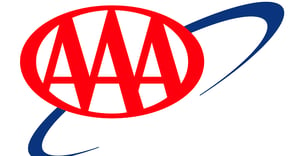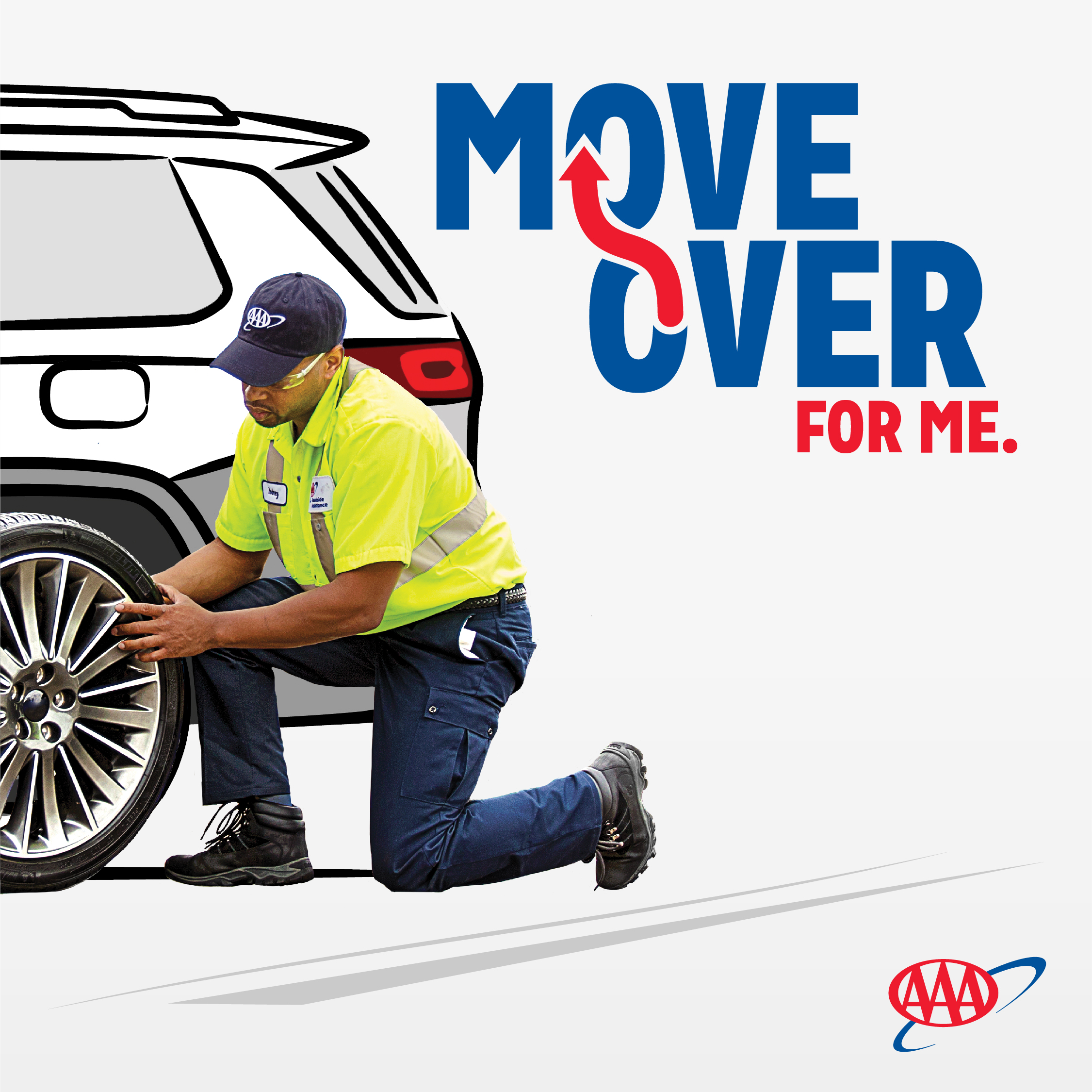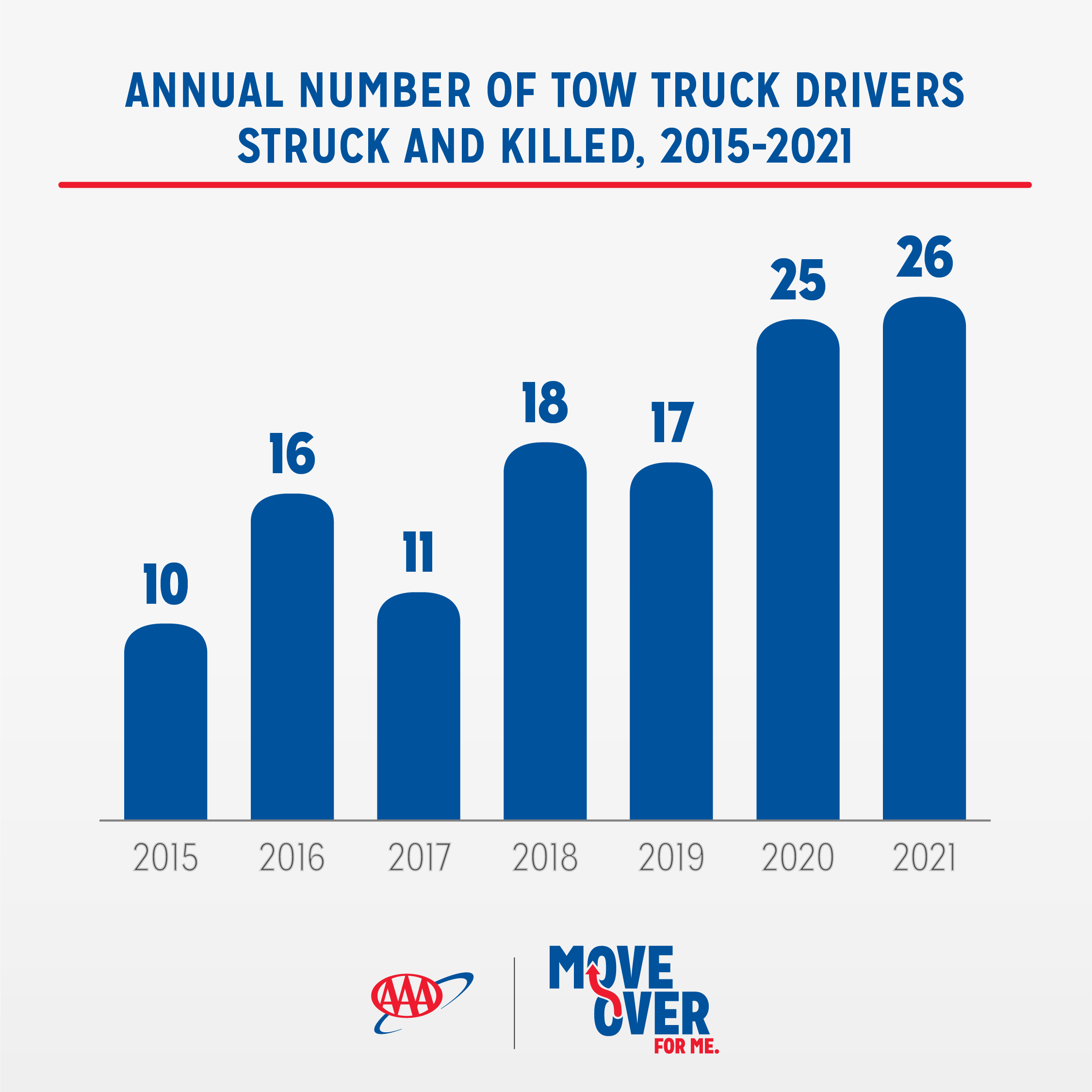
Highway Heroes at Risk: AAA Study Examines Characteristics of Fatal Roadside Worker Crashes
Speed, Impairment, and Distraction are Likely Factors for Many Roadside Crashes
DEARBORN, Mich., (February 6, 2024) — Struck and killed – nearly four times more than reported. It’s the chilling reality for roadside assistance providers (RAPs), including tow truck drivers, mobile mechanics, emergency roadside technicians, and safety service patrols who put themselves at risk every day to help others. A new study from the AAA Foundation for Traffic Safety examined the conditions of crashes in which RAPs were struck and killed by vehicles, and why the problem is even bigger than previously believed.
 |
“This new research reveals that vehicle collisions with roadside workers are not always the result of poor visibility,” said Adrienne Woodland, spokeswoman, AAA – The Auto Club Group. “More often than not, speed, driver distractions, and/or impairment are a factor.”
AAA Foundation researchers combed through diverse information sources and determined that 123 roadside assistance providers were killed by passing vehicles between 2015 and 2021. This grim figure dwarfs the approximately 34 noted in national crash data. AAA says the discrepancy is because state police crash reports incorrectly cited the crash victims as “pedestrians” instead of roadside assistance providers. While yearly total traffic fatalities increased significantly over the study period, the data suggest that roadside assistance provider fatalities increased even more.
Key Findings
Speed Limits – 89% of the crashes occurred at locations with 55 mph or higher speed limits, almost all on interstates or other limited-access highways.
Weather Conditions – 84% of crashes occurred in good weather without precipitation/slippery road conditions.
Time of Day – 63% occurred during darkness, of which nearly two-thirds were at locations without street lighting. But 34% of the crashes were in daylight.
Driver Distraction/Impairment/Fatigue – 63% occurred in crashes in which the striking vehicle had already left the road and was traveling on the shoulder or beyond before impact. This suggests the involvement of factors such as impairment, fatigue, or distraction. More than one-third of striking drivers who were tested for alcohol were alcohol-positive. But nearly half were not tested.
“Interstates are particularly hazardous, as more than half of roadside provider deaths occurred there,” Woodland said. “The study attributes that to drivers traveling at high speeds, while not expecting to encounter pedestrians on freeways. This reinforces the importance that drivers stay focused on the task of driving and be prepared to slow down and move over when approaching workers on the roadside.”
Next Steps
AAA urges action on several fronts:
- Slow down, Move Over: Reinforce these life-saving laws, reminding drivers to give space to ANYONE (including but not limited to roadside assistance, police, fire, EMS) working on the side of the road. Every ounce of awareness could be the difference between life and death.
- Shield the Vulnerable: Utilize countermeasures to prevent vehicles from striking workers. The Foundation previously examined vehicle-mounted electronic variable message signs and found them effective at alerting drivers to slow down and move over.
- Train for survival: Teach roadside workers to prioritize work away from traffic and equip them with strategies to avoid harm's way. Training for roadside assistance providers should emphasize the importance of not working or standing on the traffic-facing side of the incident whenever possible and minimize time spent on the traffic-facing side of the scene.
“Let’s remember this study is about real people, not statistics,” said Jake Nelson, AAA’s traffic safety and advocacy director. “It’s a shared responsibility to solve this safety challenge. Roadside workers and all of us who drive by them have to take action to move towards zero traffic deaths.”
The AAA Foundation study results suggest that full compliance with Move Over laws isn’t enough. States also must address factors like speed, impaired driving, and distraction that lead to road departure crashes. The AAA Foundation’s research reinforces the importance of the Safe System Approach (SSA) to transportation planning. The SSA is a strategic way of leveraging the engineering and behavioral countermeasures proven effective at preventing traffic crashes and the injuries that can result from them. Learn more about the SSA HERE.
AAA Foundation for Traffic Safety
Established in 1947 by AAA, the Foundation for Traffic Safety is a nonprofit, publicly funded 501(c)(3) charitable research and educational organization. The AAA Foundation's mission is to prevent traffic deaths and injuries by researching their causes and by educating the public about strategies to prevent crashes and reduce injuries when they do occur. This research informs the development of educational materials for drivers, pedestrians, bicyclists, and other road users.
AAA in Michigan celebrated its 100th Anniversary - A Century of Service in 2016 and has over 1.5 million members across the state. It is part of The Auto Club Group (ACG). Connect with us on Facebook and LinkedIn.
The Auto Club Group (ACG) is the second largest AAA club in North America with more than 13 million members across 14 U.S. states, the province of Quebec and two U.S. territories. ACG and its affiliates provide members with roadside assistance, insurance products, banking and financial services, travel offerings and more. ACG belongs to the national AAA federation with more than 64 million members in the United States and Canada. AAA’s mission is to protect and advance freedom of mobility and improve traffic safety. For more information, get the AAA Mobile app, visit AAA.com, and follow us on Facebook, Twitter and LinkedIn.















